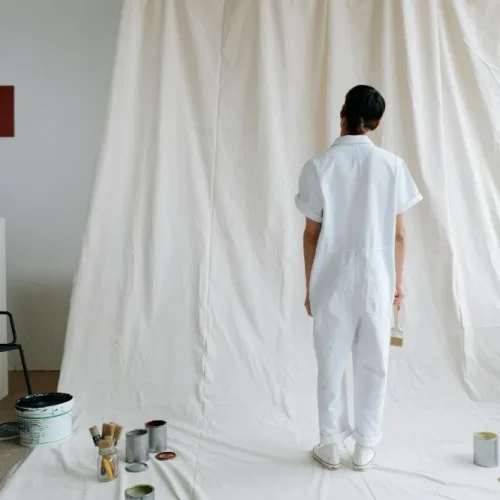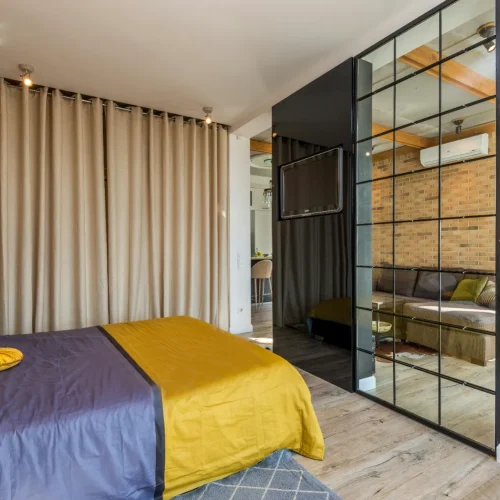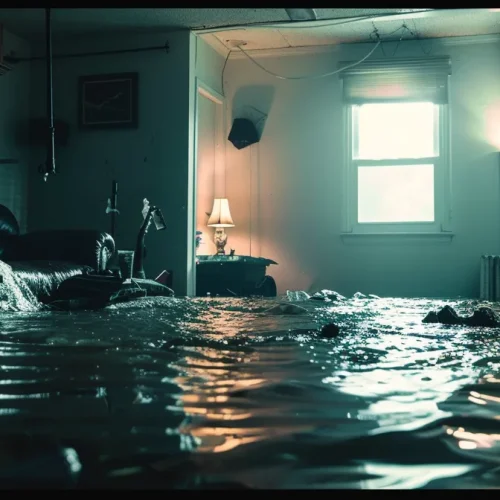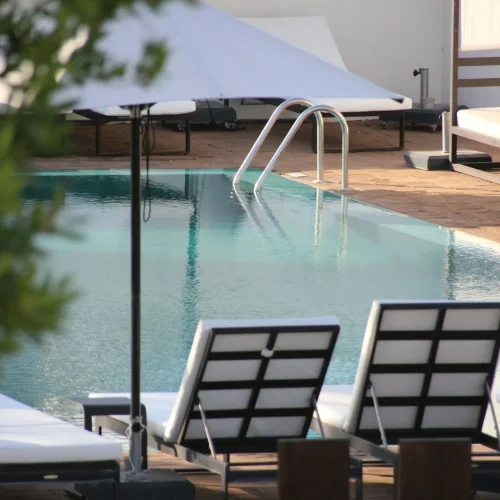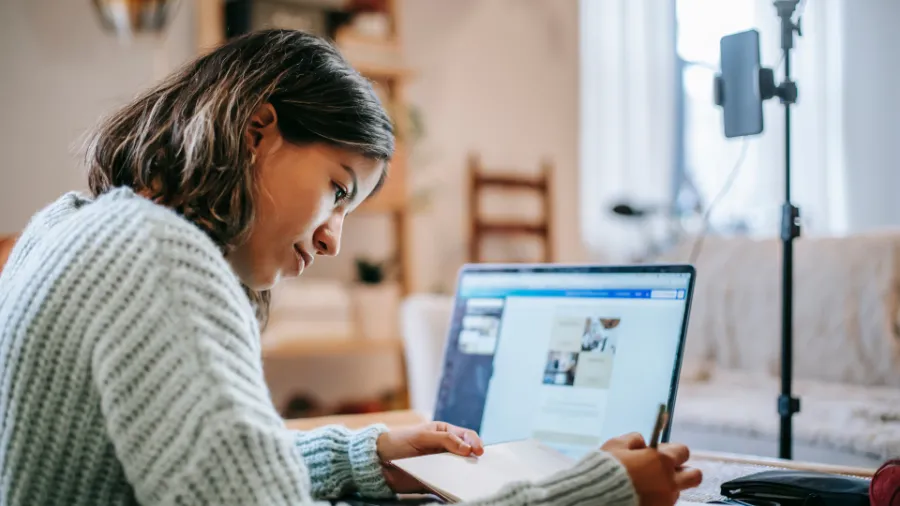
Designing a minimalist study space is about more than style, it’s about unlocking your peak focus. In a world full of distractions, a clean, clutter-free environment can help your mind breathe and your thoughts flow. With simple furniture, soft neutral tones, and smart organization, you can create a space that feels both calming and inspiring. Every item has a purpose, and every detail supports productivity.
Whether you’re preparing for exams, working from home, or pursuing a passion project, a minimalist setup transforms studying into a focused, stress-free experience you’ll look forward to every day.
Essential Elements of a Minimalist Study Space Design
Now that we understand the profound impact the environment has on cognitive performance, let’s examine the specific design elements that form the foundation of any successful learning environment.
Color Psychology for Enhanced Concentration
The colors surrounding you directly influence brain function and attention span. Soft blues and greens promote calm focus, while warm whites create clarity without sterility. Don’t underestimate the power of a simple color change, it can transform your mental state within minutes.
Temperature-based color selection matters more than you’d think. Cool colors work best for analytical tasks like math or science, while slightly warmer tones support creative subjects. Many students notice improved focus in study areas that incorporate these evidence-based color principles, a benefit that is also frequently observed by parents utilizing K12 tutoring programs to provide additional academic support for their children.
Strategic Furniture Selection and Placement
Your desk and chair aren’t just furniture, they’re productivity tools. An ergonomic setup prevents fatigue and maintains alertness during long study sessions. Position your desk to face away from high-traffic areas while ensuring you’re not staring at a blank wall.
Multi-functional furniture maximizes space efficiency without sacrificing comfort. A desk with built-in storage eliminates the need for additional organizers, while an adjustable-height chair accommodates different tasks. Sacred geometry principles suggest arranging furniture in clean, geometric patterns that promote mental clarity.
Decluttered Workspace Organization Systems
With the right colors and furniture creating your minimalist foundation, the next critical step is implementing organization systems that maintain this clean aesthetic while maximizing functionality.
The Zone-Based Approach to Study Room Design
Effective study room design divides your space into distinct zones serving specific purposes. Your active work zone contains only immediate essentials, laptop, notebook, and current textbooks. Everything else gets stored in designated areas outside your direct sightline.
Reference materials deserve their zone, accessible but not intrusive. Research reveals that 40% of productive time is lost when trying to refocus after switching tasks, making organized storage crucial for maintaining concentration.
Digital Minimalism Integration
Cable management isn’t just about appearances, tangled wires create subconscious stress and visual chaos. Use cable trays or adhesive organizers to route cords cleanly along desk edges. Screen positioning should follow the 20-20-20 rule: every 20 minutes, look at something 20 feet away for 20 seconds.
Curating digital tools means choosing quality over quantity. Instead of juggling multiple apps, find integrated platforms that handle scheduling, note-taking, and file management in one place. This creates a decluttered workspace both physically and digitally.
Lighting Solutions for Maximum Focus and Productivity
Once your workspace zones are perfectly organized, proper lighting becomes the catalyst that transforms your minimalist space from merely tidy to truly productivity-enhancing.
Circadian Rhythm-Aligned Lighting Systems
Natural light synchronizes your internal clock with daily rhythms, boosting alertness during peak study hours. Position your desk perpendicular to windows to minimize glare while maximizing illumination. Morning light is particularly powerful for maintaining focus and productivity throughout the day.
Smart lighting systems automatically adjust color temperature based on time, cooler light for daytime focus, warmer tones for evening review sessions. This isn’t just convenient; it’s scientifically designed to support your brain’s natural patterns.
Task-Specific Illumination Strategies
Different subjects require different lighting approaches. Reading dense texts benefits from warm, focused light that reduces eye strain. Mathematical calculations need bright, cool light that promotes analytical thinking. Adjustable desk lamps let you customize illumination for each task.
Avoid harsh overhead fluorescents that create shadows and cause fatigue. Instead, layer lighting with ambient room light plus targeted task lighting. This creates depth and visual interest while supporting sustained concentration.
Technology Integration in Minimalist Workspaces
As we harness environmental factors to boost cognitive performance, smart technology integration offers powerful tools to automate and optimize these focus-enhancing conditions effortlessly.
Smart Home Automation for Study Environments
Voice-controlled systems eliminate physical distractions by managing lighting, temperature, and music without breaking focus. Set up automated routines that dim lights and activate white noise when you begin studying. These environmental cues train your brain to enter focus mode more quickly.
Productivity tracking integration provides valuable insights into your study patterns. However, choose tools that work quietly in the background, constant notifications defeat the purpose of a home office minimalist setup.
Minimalist Tech Setup Strategies
Single-cable solutions reduce desk clutter while maintaining full functionality. USB-C hubs can charge your laptop, connect external monitors, and transfer data through one connection. Wireless technology further eliminates cable mess, but don’t sacrifice reliability for convenience.
Hidden storage for electronic accessories keeps essential items accessible without creating visual chaos. Drawer organizers with specific compartments for chargers, adapters, and cables prevent the dreaded “junk drawer” syndrome.
Budget-Friendly Minimalist Transformations
While seasonal flexibility maximizes your space’s effectiveness, you don’t need a large budget to achieve these transformative results, strategic, cost-effective solutions can deliver remarkable improvements.
DIY Solutions for Workspace Optimization
Repurposing household items often works better than buying new organizers. Mason jars become pencil holders, shoe boxes transform into drawer dividers, and old picture frames can display motivational quotes or study schedules.
Upcycling furniture for study purposes saves money while creating custom solutions. Sand and paint an old desk to match your color scheme, or add wheels to a bookshelf for mobile storage. These personal touches make your space feel uniquely yours.
Investment Prioritization Guide
Focus spending on items you’ll use daily, a quality desk chair, and proper lighting, should take priority over decorative elements. Calculate the cost per hour of use to determine which purchases provide the best value for your study routine.
High-impact, low-cost improvements include organizing systems, paint, and basic ergonomic accessories. Save major furniture purchases until you’ve tested your space layout with temporary solutions. You might discover that your initial assumptions about needed items were wrong.
Final Thoughts on Minimalist Study Design
Creating your ideal study environment doesn’t require perfection, it requires intention. The strategies we’ve covered transform any space into a focused learning environment through deliberate choices about color, organization, lighting, and technology. Remember that minimalism is about curating elements that truly serve your academic goals while eliminating everything that doesn’t.
Start with one small change today, whether that’s clearing your desk surface or adjusting your lighting setup. Your future self will thank you for taking this first step toward better focus and academic success.
Common Questions About Minimalist Study Spaces
Yes, portable organizers and visual barriers create effective study zones even in shared spaces without permanent modifications.
A functional setup costs $100-300, focusing on essential organizers, lighting, and ergonomic accessories rather than expensive furniture.
Research shows one meaningful item enhances creativity, while three or more create cognitive overload and reduce focus.



